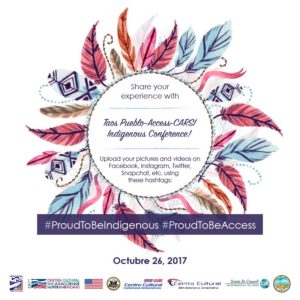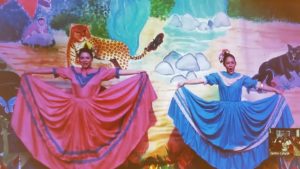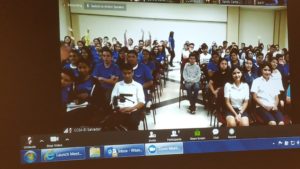An International Visitor Leadership Program (IVLP) typically lasts three weeks, but the connections forged can lead to inspired ongoing collaborations that multiply the impact well-beyond the actual participants. One recent example demonstrates this beautifully featuring creative use of technology, teleconference-based exchange between schoolchildren in five countries, and spotlighting dance, music and art from indigenous communities.
In August of this year, Meridian administered an IVLP that brought together four Central American representatives of the U.S. Department of State’s Office of American Spaces to provide them with a broad look at American society and share best practices in managing cultural centers. In addition to segments in New York, New York and Montgomery, Alabama, the project took visitors to Santa Fe, New Mexico, where meetings were organized with representatives of the Indigenous Peoples community in nearby Taos Pueblo. Inspired by the similarities found between their respective communities, the participants later partnered with the Santa Fe Council on International Relations and the Taos community to facilitate a live webinar that would not only connect the participants and their interlocutors, but also school children from Taos, El Salvador, Nicaragua, Honduras, and Costa Rica.

The resulting webinar, which took place on Wednesday, October 26, included active participation from the U.S. Embassies in each host country. For example, Ms. Sharon Day, U.S. Ambassador to Costa Rica, briefly spoke at the event and thanked everyone for their participation. The other Embassies were represented with the inclusion of Public Affairs Officers, Information Resource Directors, and Cultural Affairs Officers.
After Ambassador Day expressed her support for the program, greetings were exchanged between Access students and alumni from Central America and students from the Santa Fe Indian School.
Following this, the Taos Tourism Office Director Ilona Spruce provided a comprehensive presentation on the history of the community, its traditional architecture, and its customs. She spoke in depth about the community’s efforts to maintain its traditions, empower its residents, and preserve its culture through education. Her presentation resonated for the participating Central American schools, which are also home to majority indigenous student bodies.
Next, students in each of the five schools offered prepared presentations, representing various aspects of their respective countries including food, dance, music, folk tales, and history. After an hour of colorful exchanges including dance performances, songs, and art demonstrations, a questions and answers forum opened up where the students could ask each other about what they had just witnessed.


With the final question asked and answered, the webinar concluded. It was clear afterwards that there was interest in hosting similar events in the future. Meridian especially welcomes any IVLP Alum’s effort to communicate with interlocutors after their programs and create these exchanges.
















